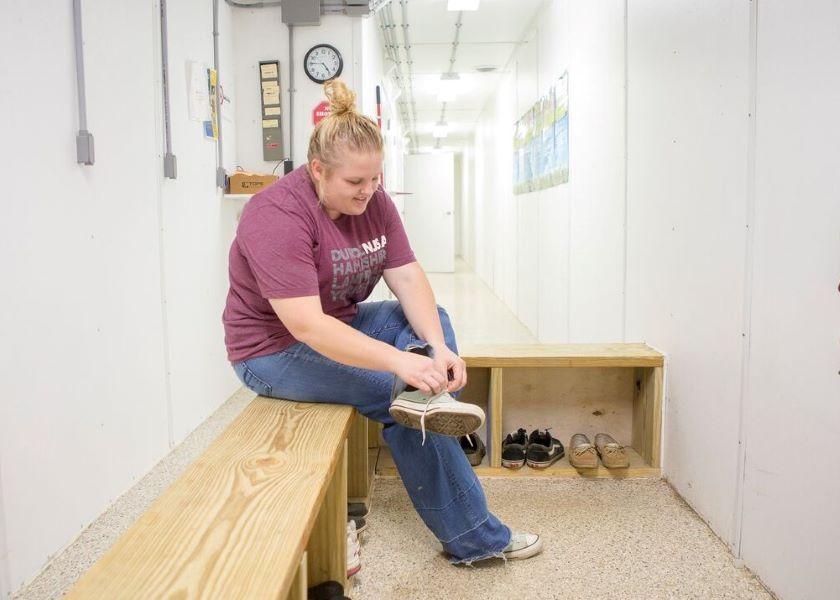Effective Swine Biosecurity That Helps Stretch a Dollar

Swine producers are caught in belt-tightening measures testing the limits of their resourcefulness. You shouldn’t let the need to save money blind you to the importance of basic biosecurity for your pig operation, but there are ways to save.
Maintaining biosecurity measures is vital to preventing pathogens from entering your barns and triggering interventions such as antibiotics and more frequent veterinary visits — or worse, higher mortality rates. Even when ill animals recover and survive, their lungs or digestive system might be damaged enough to reduce their average daily gain and feed conversion efficiency.
Biosecurity means doing what you can to reduce the chances of infectious disease via people, animals, equipment or vehicles. It can be a complex set of filters and electronics and changing houses, or as simple as basic barriers coupled with protocols to which you strictly adhere. In the spirit of cost savings, let’s cover some basic options that should help nearly any producer review procedures.
Back to Basics
Ideally, you might like to install a dedicated shower and changing room with filtration between the outside world and your barn, but can’t afford the entire setup. If you can afford the shower but not the filtration, some is better than nothing. (In fact, that’s the theme of this article: Don’t let the pursuit of “best” that you can’t afford get in the way of doing “better” in less expensive ways.)
You can simply designate a small anteroom to the barn for a Danish entry. This is a room separated into two parts with a “dirty zone” and a “clean zone,” the latter stocked with uncontaminated footwear and clothing. This prompts anyone entering the barn to change their footwear and outer clothing so as not to carry outside pathogens to the pigs and contains a sink for hand-washing (and perhaps a foot bath), if not a full shower.
I like to define expenditures in units of pigs. For example, stocking a basic small changing area like this might cost less than $100 per person to re-clothe if we figure $25 for coveralls, up to $60 for boots and cheap totes to store them — approximately the cost of producing two wean pigs or one market hog. So for an equivalent production cost of 1-2 pigs per person, you can significantly lower the flow of disease to your animals.
Another risky disease vector is trucks moving in and out of farms, especially for market loads at the end of a closeout. A full wash at each passage isn’t cheap, so if you can’t justify this kind of expense, think of ways you can work around it without sacrificing biosecurity against pathogens such as the Porcine Reproductive and Respiratory Syndrome (PRRS) or Porcine Epidemic Diarrhea (PED) virus. Winter increases this risk, coating trucks with frozen water and salt and making them harder to clean. If a partial wash costs less than a full wash, it may be better than none at all.
Establish clear lines of separation during loading and unloading. Don’t allow the truck driver in chutes or barns. Even inside the trailer, designate someone to stay in there and a separate person on the ground, neither crossing into the other environment. When moving animals into your barn, establish “pyramids” to make sure you are loading in your healthiest animals first — don’t go just by age.
I would not advise cutting corners for truck washing into sow spaces. Tracking in pathogens to gestating pigs and piglets may result in infections in the young animals and leave a negative impact, impeding their health and growth performance even into the market hog stage.
I also recommend these three biosecurity basics for facilities constructed before 2019:
● Some sort of loadout room or transfer station, to create “airlocks” so as not to backdraft air off of trailers, or positive-pressure those rooms, and be sure the space can hold half a trailer’s volume of pigs so you only have to conduct two transfers per truck.
● Establish a mortality drop so you have an effective way to remove carcasses without having crossover between the facility interior and the equipment and compost outside those spaces — for example, the facility space elevated slightly from the drop so there’s no disease vector back into the facility.
● Designate a separate dry-storage area for feed and supplies. If you cannot afford to install filtration now, make sure any facility improvements are designed to accept this kind of add-on later.
Smart While Saving
Speaking of filtration, there is no denying it is an effective way to cut down on pathogens entering your pig spaces. But producers sometimes have to prioritize “now” versus “later.” If you are constructing any new facilities or additions or doing major maintenance that alters your building design, be sure to account for filtration and include future accommodation.
Reexamine your inputs to see where you might use lower-cost products. If you make the switch to, say, generic that costs less, you want to be certain it does at least as good a job. Carthage Veterinary Service (CVS) has switched disinfectants to clean our barns; the new one costs less and uses different chemistry, but achieves the same results. With our buying power, CVS can assist producers with negotiating lower-cost products and vaccines so they don’t have to sacrifice safety for savings.
Finally, there are costs you won’t be able to cut out. At CVS barns, we use a higher-cost product for incoming water treatment because it is safer for producers and employees to handle. Above all, use good judgment in making changes for cost savings.
Read More:







